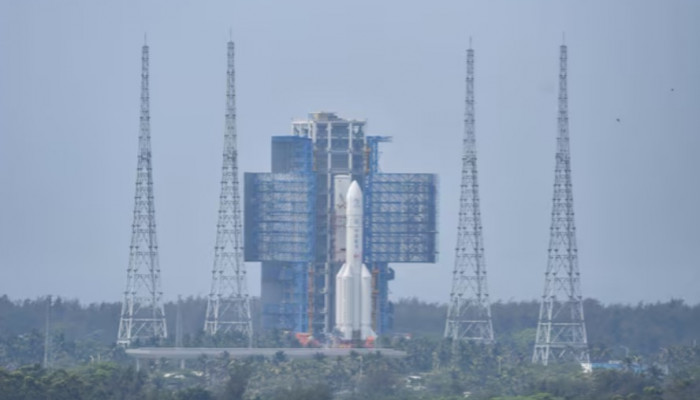China achieves historic mission, lands on far side of moon for sample retrieval
- In Reports
- 05:46 PM, Jun 03, 2024
- Myind Staff
China successfully landed an uncrewed spacecraft on the far side of the moon on Sunday, marking a significant milestone in its ambitious mission to collect the world's inaugural rock and soil samples from the lunar hemisphere shrouded in darkness.
This achievement enhances China's position as a major player in space exploration amidst a worldwide race to the moon. Nations like the United States are aiming to harness lunar minerals for the sustenance of prolonged astronaut missions and the establishment of lunar bases within the coming decade.
The Chang'e-6 spacecraft, equipped with a variety of tools and its own launcher, successfully landed in a vast impact crater known as the South Pole-Aitken Basin on the moon's far side at 6:23 a.m. Beijing time (2223 GMT), according to the China National Space Administration.
The agency stated on its website that the mission "involves numerous engineering innovations, poses high risks, and presents significant challenges." It further expressed confidence that the payloads carried by the Chang'e-6 lander would operate as intended and undertake scientific exploration missions as planned.
China's successful Chang'e-6 mission marks the country's second landing on the far side of the moon, an achievement unmatched by any other nation. This region poses unique challenges due to its deep, dark craters, complicating communications and robotic operations.
Experts describe the landing phase as highly risky, citing the absence of line-of-sight communications and the need for complex automation. Neil Melville-Kenney from the European Space Agency highlighted the difficulty of automation, especially in areas with long shadows.
Launched on May 3 via China's Long March 5 rocket, the Chang'e-6 probe reached lunar vicinity within a week before initiating its landing preparations. This mission is the third lunar landing this year, following Japan's SLIM lander in January and a lander from U.S. startup Intuitive Machines in February.
Using a scoop and drill, the Chang'e-6 lander aims to collect 2 kg (4.4 pounds) of lunar material over two days and return it to Earth. The samples will be transferred to a rocket booster atop the lander, which will launch back into space, rendezvous with another spacecraft in lunar orbit, and return to China's Inner Mongolia region by June 25.
If successful, the mission will provide China with valuable insights into the moon's 4.5 billion-year history and shed light on the formation of the solar system. It will also enable scientists to compare the unexplored far side of the moon with the better-understood Earth-facing side.
China's official Xinhua news agency reported that a simulation lab for the Chang'e-6 probe will develop and verify sampling strategies and equipment control procedures. The lab will utilise a full-scale replica of the sampling area based on exploration results to simulate the environment, rock distribution, and lunar soil conditions around the landing site.
China's lunar strategy includes plans for its first astronaut landing around 2030, with Russia as a partner. In 2020, China conducted its first lunar sample return mission with Chang'e-5, retrieving samples from the moon's nearer side.
The U.S. Artemis programme envisions a crewed moon landing by late 2026 or later. NASA has partnered with space agencies including those of Canada, Europe, and Japan, whose astronauts will join U.S. crews on Artemis missions.
Artemis heavily relies on private companies, including Elon Musk's SpaceX, whose Starship rocket aims to attempt the first astronaut landing since NASA's final Apollo mission in 1972. However, Japanese billionaire Yusaku Maezawa recently cancelled a private mission around the moon due to schedule uncertainties in the Starship's development.
Additionally, Boeing and NASA postponed the company's first crewed launch of Starliner, a long-delayed capsule intended to become the second U.S. space taxi to low-Earth orbit.
Image source: Reuters







Comments